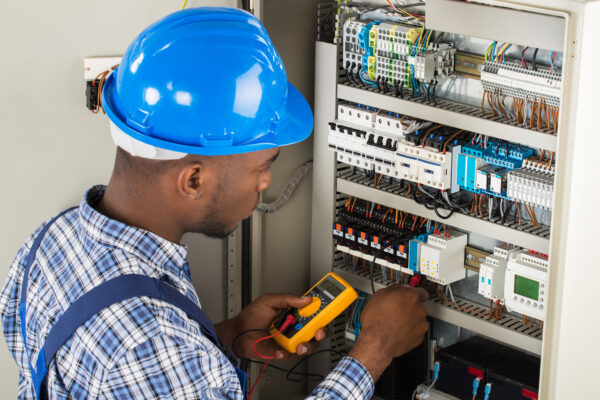 The National Fire Protection Association (NFPA)’s previously titled “Recommended Practice for Electrical Equipment Maintenance” became NFPA 70B – Standard for Electrical Equipment Maintenance and went into effect on January 16, 2023. This standard covers the preventative maintenance of electrical systems, as well as communication systems and other electronic equipment. It is designed to help increase safety around this equipment, as poorly maintained electrical equipment can pose a higher likelihood of fire, shock, and arc flash risk.
The National Fire Protection Association (NFPA)’s previously titled “Recommended Practice for Electrical Equipment Maintenance” became NFPA 70B – Standard for Electrical Equipment Maintenance and went into effect on January 16, 2023. This standard covers the preventative maintenance of electrical systems, as well as communication systems and other electronic equipment. It is designed to help increase safety around this equipment, as poorly maintained electrical equipment can pose a higher likelihood of fire, shock, and arc flash risk.
NFPA 70B was previously a list of recommendations that organizations “should” follow as best practices, whereas now they are guidelines that MUST be followed. The requirements outlined in NFPA 70B are considered to be minimum consensus requirements for safe electrical work procedures, as well as system maintenance. NFPA standards are usually enforceable by fire departments and OSHA. Although it may take some time for this standard to be adopted, those former best practices are now an enforceable standard which could lead to consequences for non-compliance. For example, OSHA can choose to issue citations based on lack of adherence to NFPA 70B. Additionally, insurance carriers can and will likely reference NFPA 70B when deciding requirements for coverage.
Does it apply to my business?
The short answer is: likely yes. Verbiage in the standard states:
“This standard applies to maintenance for electrical, electronic, and communications systems and equipment and is not intended to duplicate or supersede instructions provided by manufacturers. Systems and equipment covered are typical of those installed for industrial plants, commercial buildings, and large multifamily residential complexes.” Equipment intended for use at home is not covered. If your organization falls into one of those categories, it is more than likely covered by this standard.
Requirements of NFPA 70B
One of NFPA 70B’s primary focal points is the development and implementation of an Electrical Maintenance Program (EMP), which will help reduce property risk as well as risk to personnel by reducing risk of arc flash. The following are requirements of an EMP:
- An electrical safety program that addresses the condition of maintenance
- Identification of personnel responsible for implementing each element of the program
- Survey and analysis of electrical equipment and systems to determine maintenance requirements and priorities
- Developed and documented maintenance procedures for equipment
- A plan of inspections, servicing, and suitable tests
- A maintenance, equipment, and personnel documentation and records-retention policy
- A process to prescribe, implement, and document corrective measures based on collected data
- A process for incorporating design for maintainability in electrical installations
- A program review and revision process that considers failures and findings for continuous improvement
Maintenance can be outsourced under this standard, which means if you have an electrical service contractor, they can more than likely develop and carry out an EMP for you.
Other focal points of NFPA 70B include:
- Maintenance intervals for electrical components are now a primary focus, with schedules included based on the “condition” type the equipment is in (Condition 1 like new; Condition 2; maintenance has revealed issues in the past; Condition 3; equipment that has required repairs over the past two maintenance cycles).
- Infrared thermography required on all equipment Category 1 and 2 equipment every 12 months; every 6 months for Category 3 equipment.
- Electrical equipment cleaning is a mandated part of the EMP. Cleaning frequencies are outlined in NFPA 70B, and help reduce the likelihood of electrocution/severe shock, and fire risk.
- Incident energy analyses (Arc-Flash Studies) must be updated when there are changes to the electrical distribution system that could affect the results of the original analysis. These studies are required every 5 years.
For more information on new requirements, contact a member of our safety team.
Source:
NFPA.org




